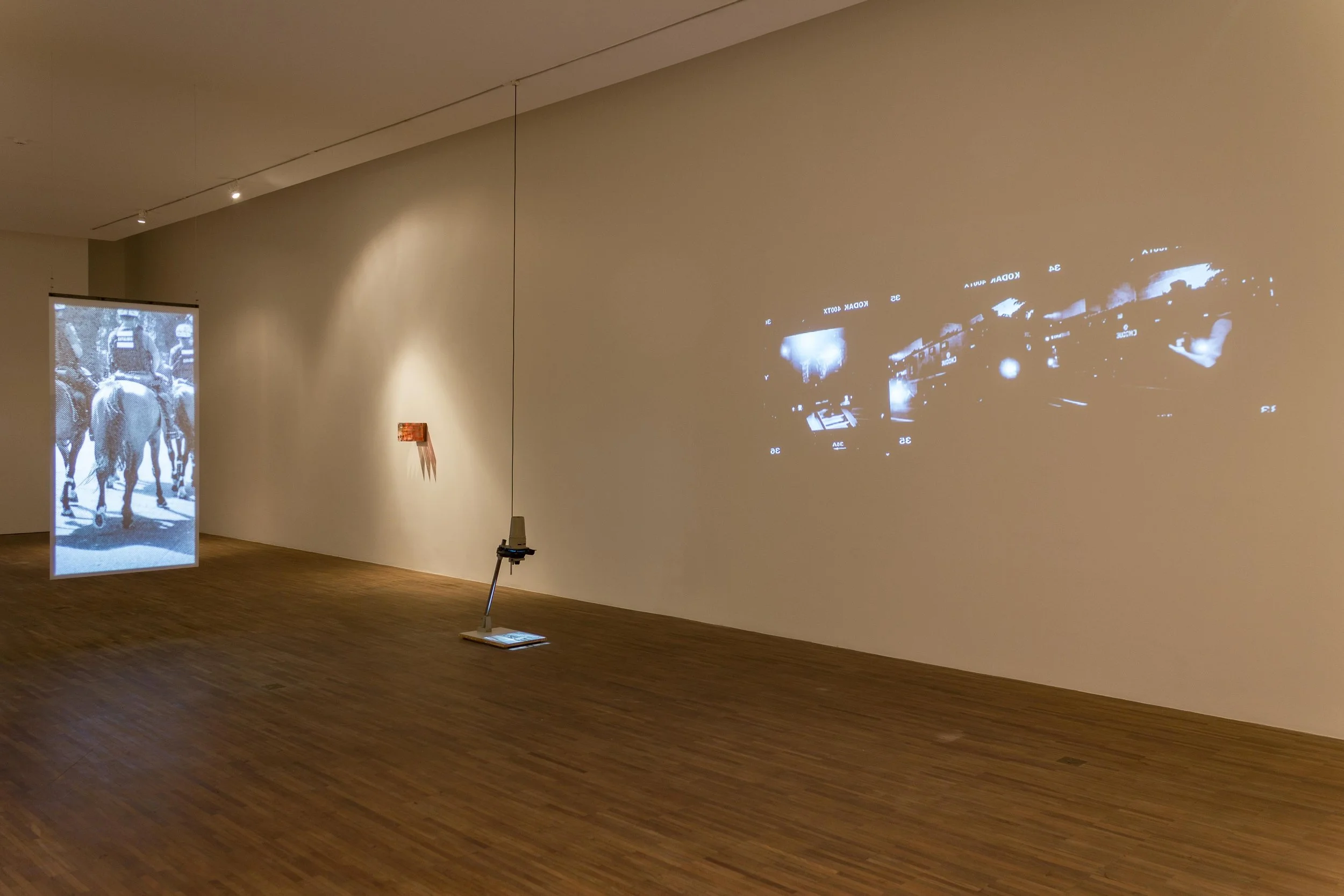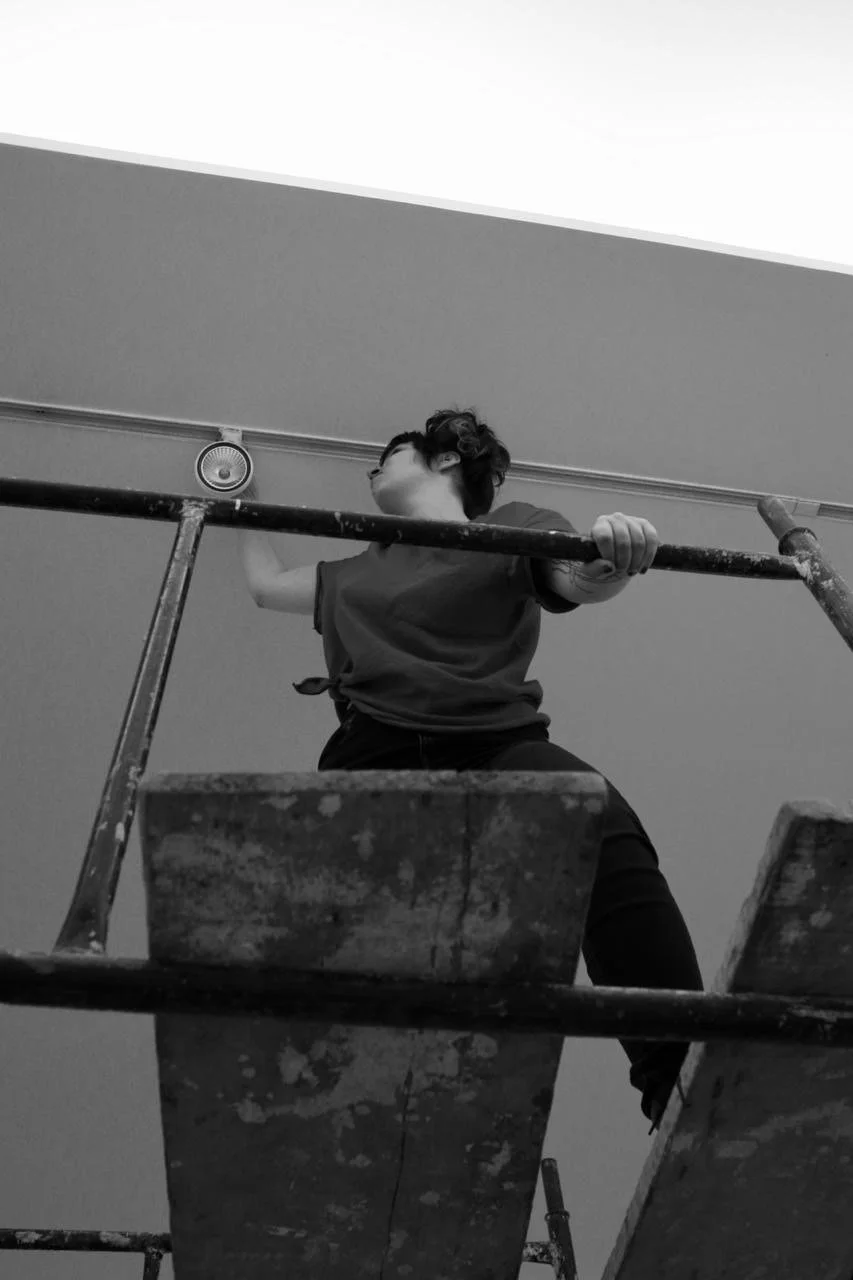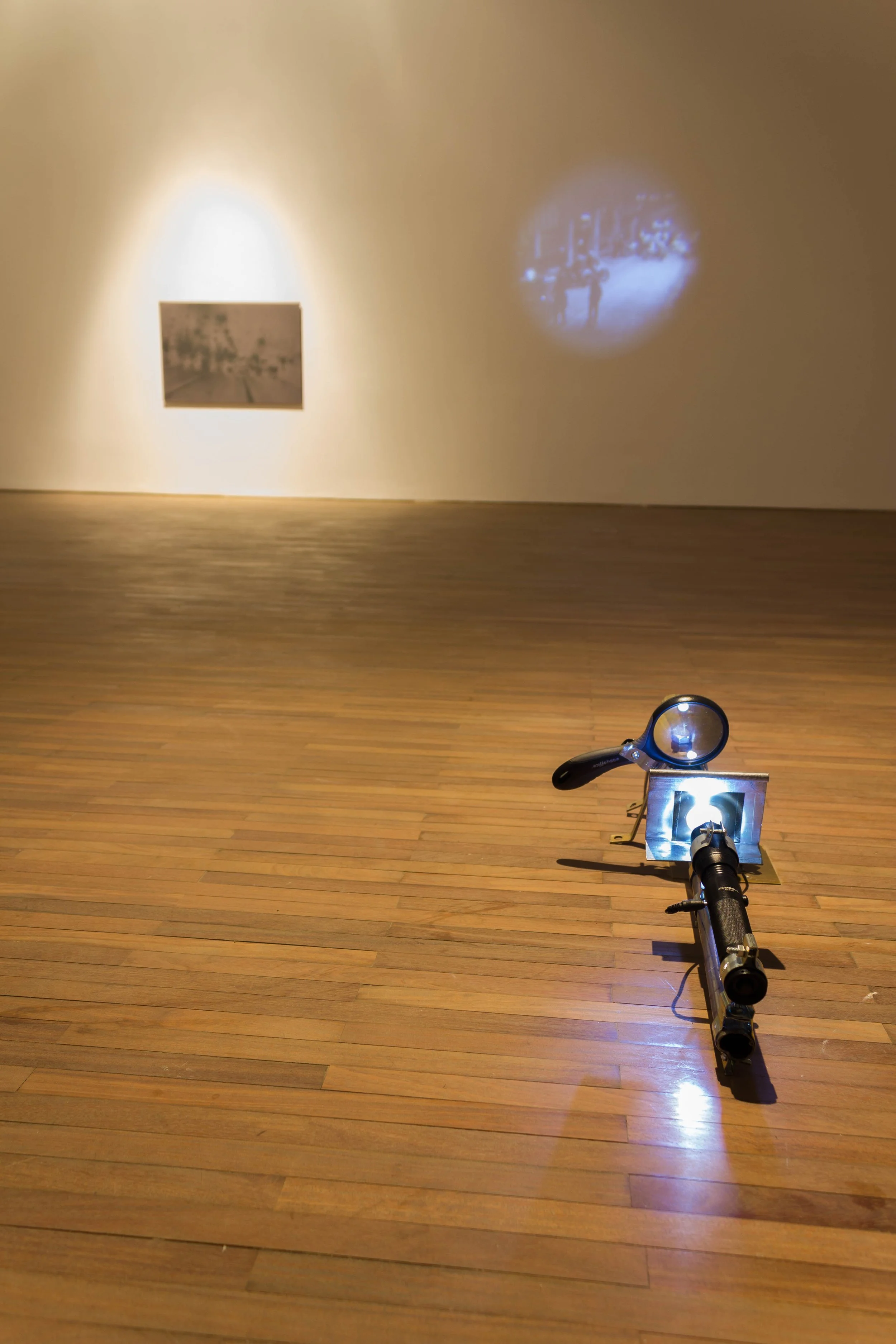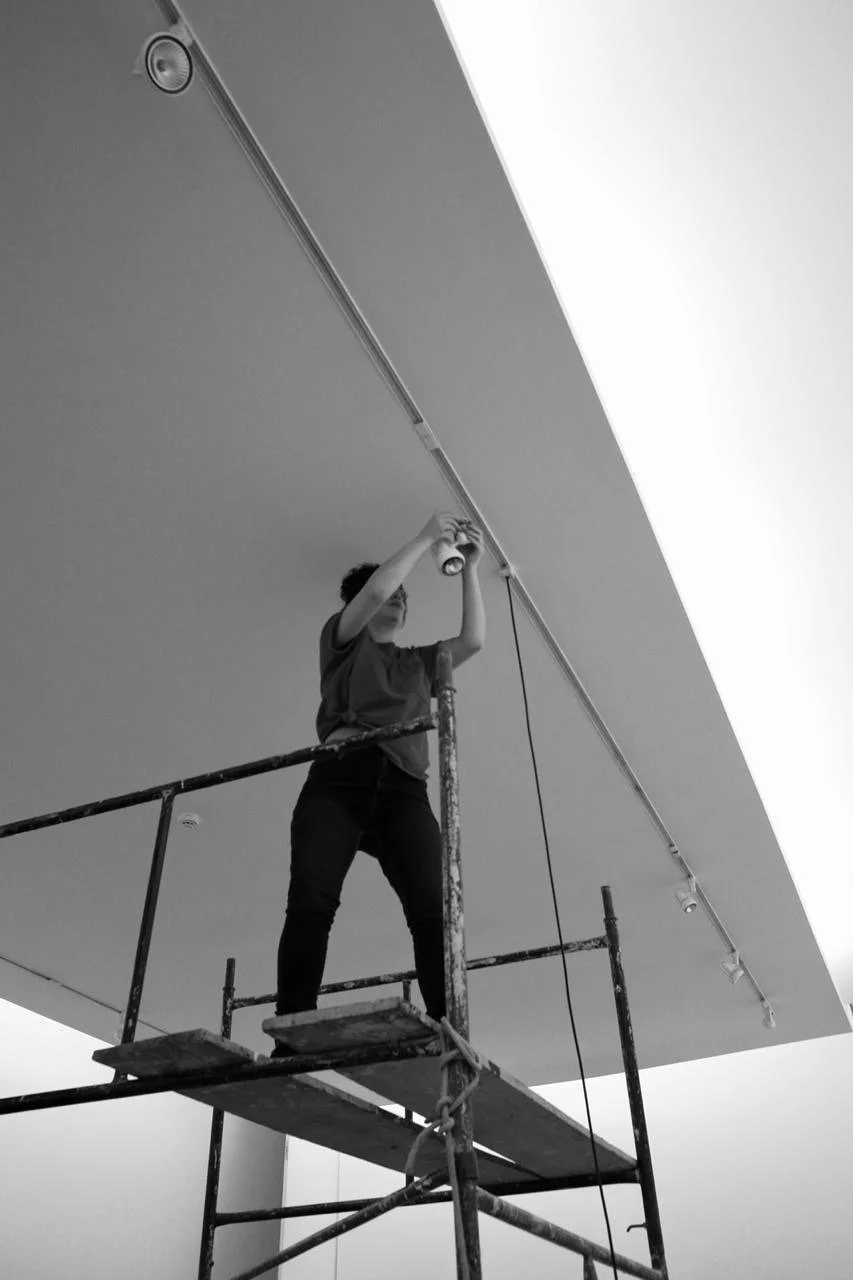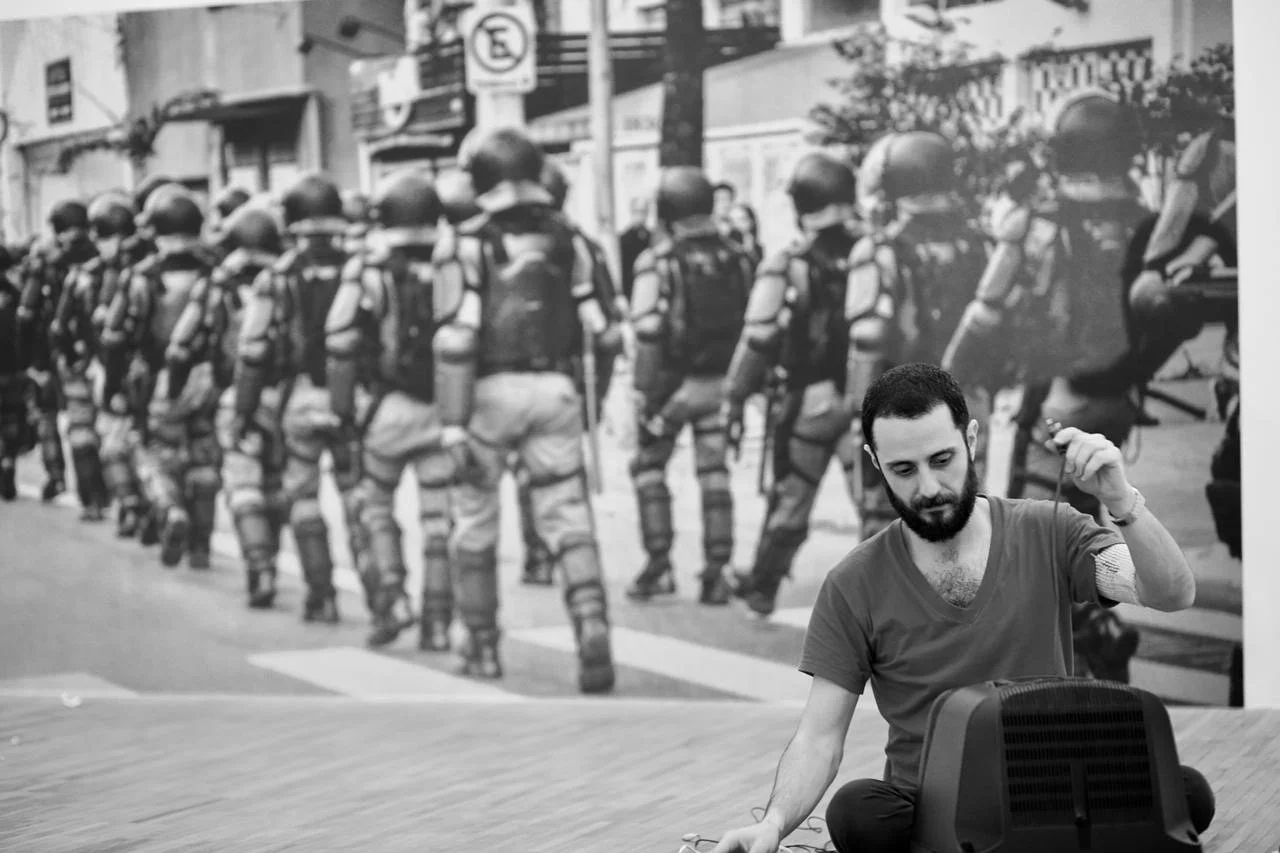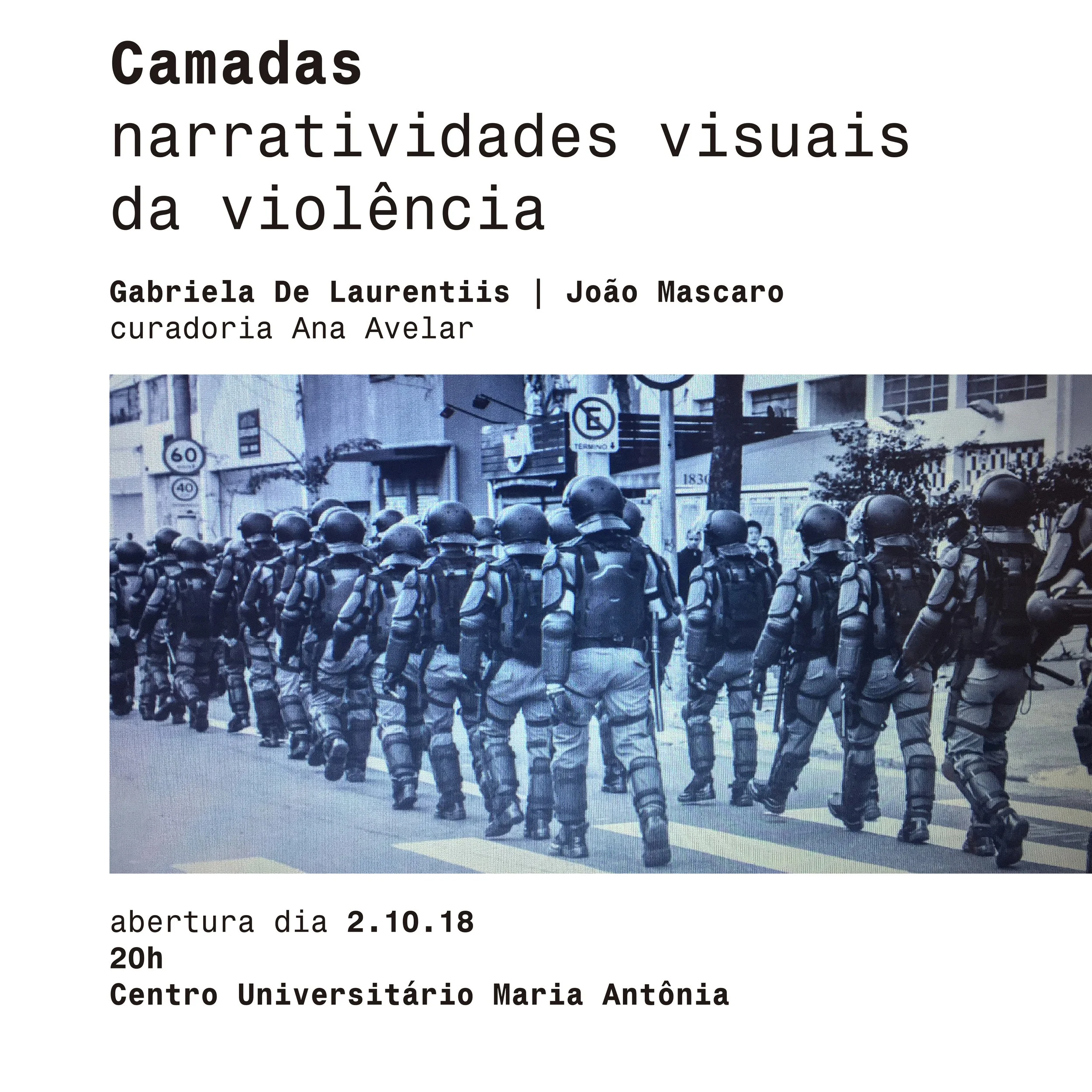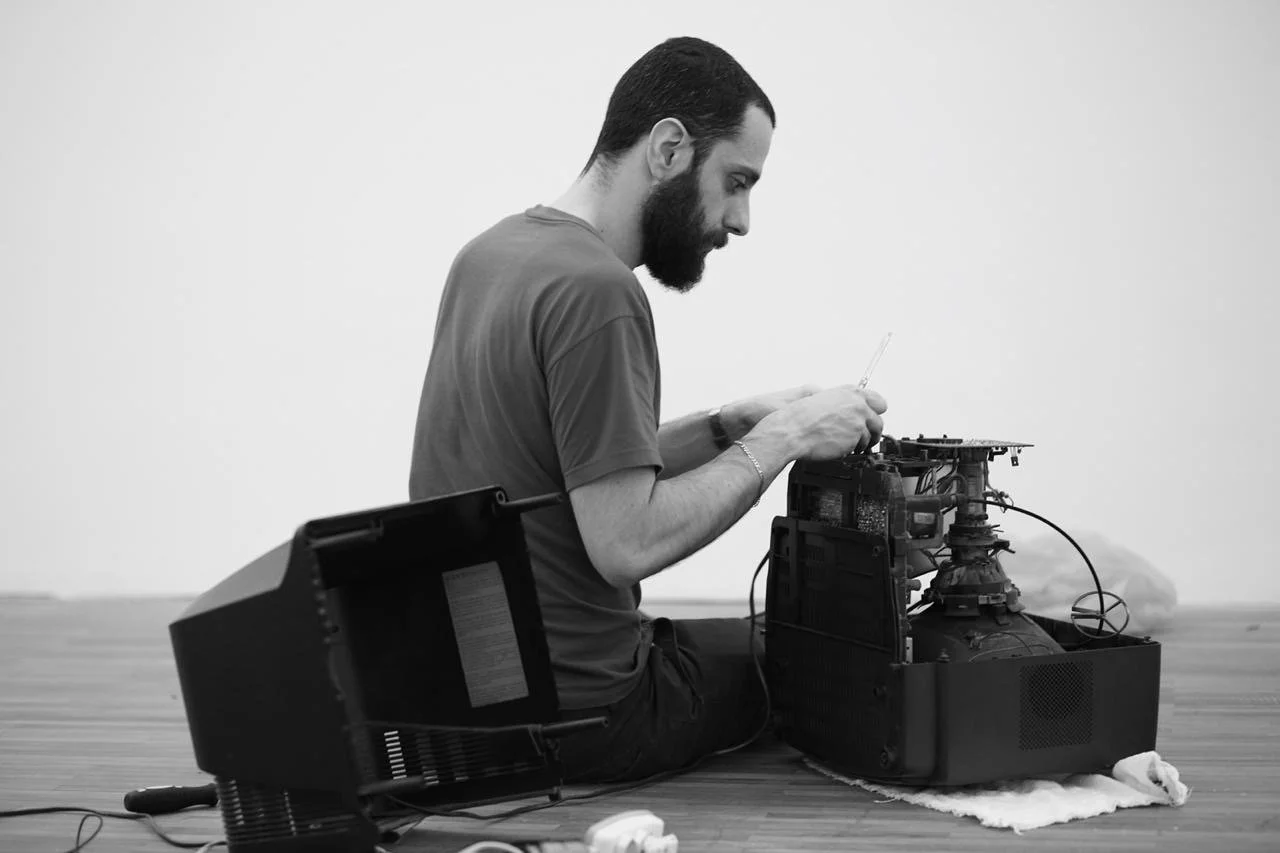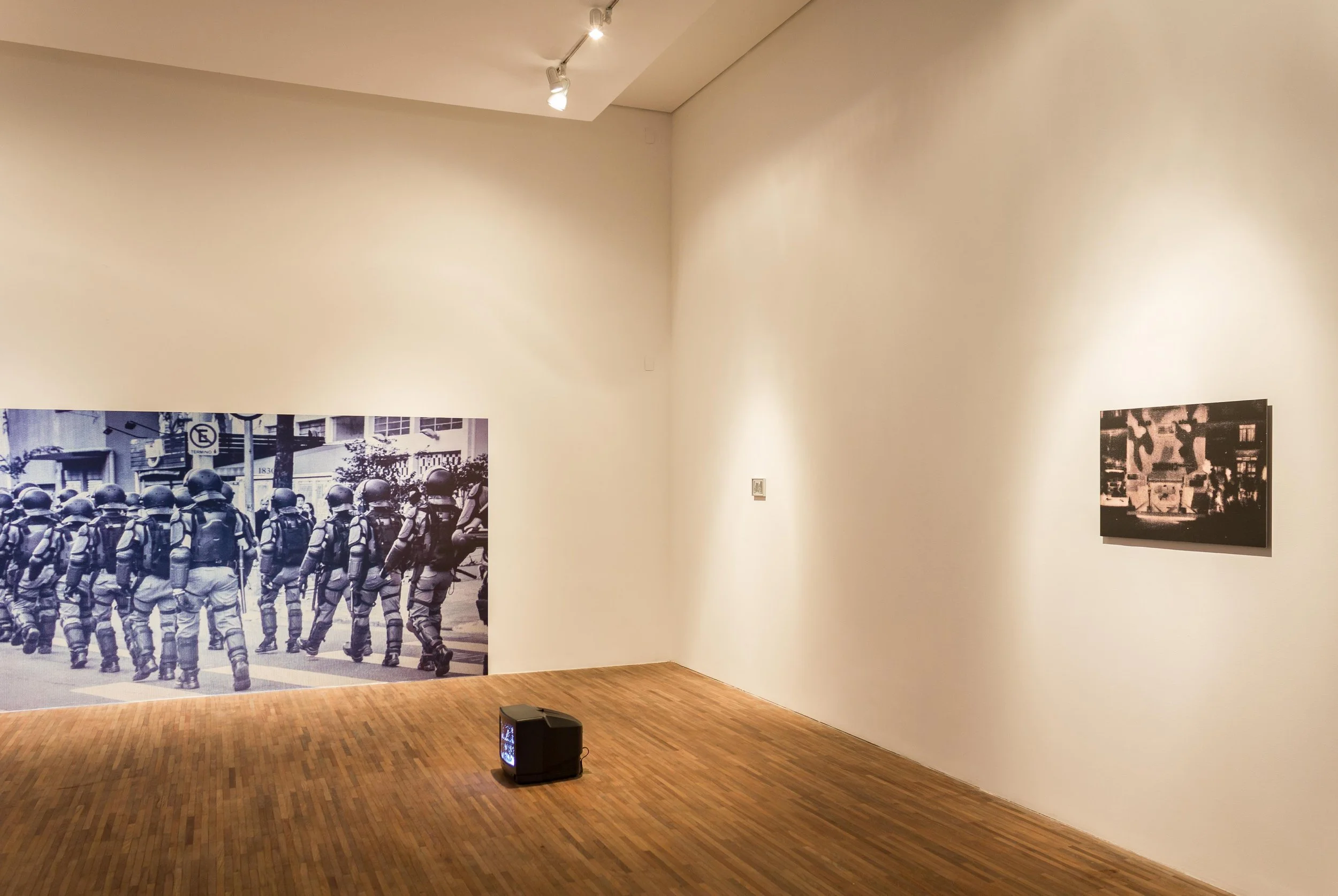CAMADAS
narratividades visuais da violência
Centro Universitário Maria Antonia
Universidade de São Paulo
2018
De Laurentiis assembling
the exhibition
ph Saulo Goulart
This week marks the 50th anniversary of the enactment of AI-5 and draws attention to an exhibition on display at the Maria Antônia University Center that reverberates 1968 in 2013 (and vice versa). I speak of "Layers: visual narratives of violence'' (Camadas: narratividades visuais da violência), by the Lâmina collective (Gabriela De Laurentiis and João Mascaro). Curated by Ana Avelar the exhibition brings together a series of image devices, from different eras and different sizes, with films, videos and photos, all in projection formats, related to moments of violence in the 2013 demonstrations.
The interesting thing is that the set mixes not only different formats, but different looks. It plays with appropriations that include images produced by the police themselves. They are, therefore, images of politics, but also traces for thinking about the contemporary politics of images.
Inserted in a place of memory as strong as the Centro Universitário Maria Antônia, in such a striking fact, among other exhibitions that make direct reference to 1968, this exhibition by the Lâmina collective obviously gains other readings. It is impossible not to get lost in time, getting confused about what time and place these images refer to.
Maria Antônian street is one of the places of memory of the dictatorship. That's all that happened on October 2, 1968, the violent confrontation between students from USP and Mackenzie, and Military Police, which became known as the Battle of Maria Antônia, one of the antecedents of AI-5.
Street demonstrations have occupied considerable space in several Brazilian cities since June 2013. On social networks, on television news, in the print media – both in their traditional vehicles and in independent ones – they created a series of imagery records of these political events. Police violence was undoubtedly one of the factors that most impressed us. However, not only the well-known physical violence directly inferred to the demonstrators' body, but the violence of the containment troops, which prevent people from circulating in the streets; of weapons that, even when not fired, provoked terror; of tanks, cars, motorcycles that transformed urban space and created an atmosphere of war.
We carried out a series of records under this focus, using analogue and digital photographic equipment and even cell phones. It took time for this material to begin to take on some form, to express the sensations produced by this experience. And it was, in conversations with the history of photography, that we found space for the conception of this project.
Lâmina
2016


